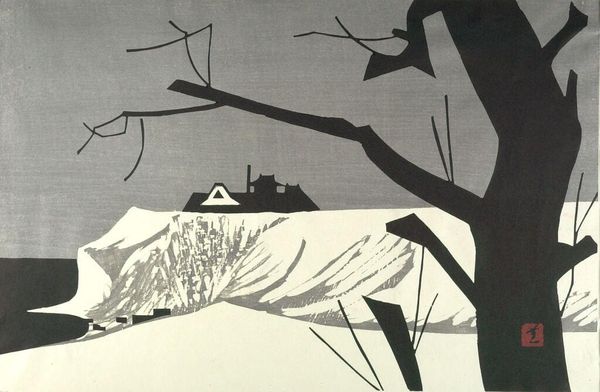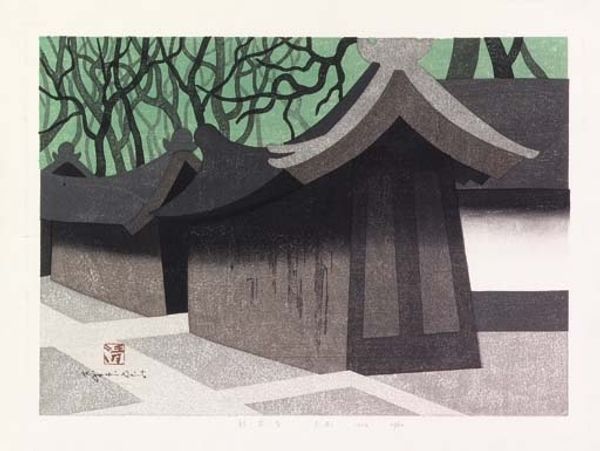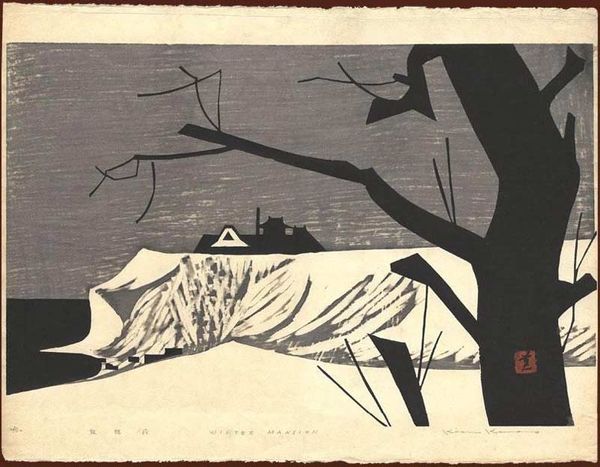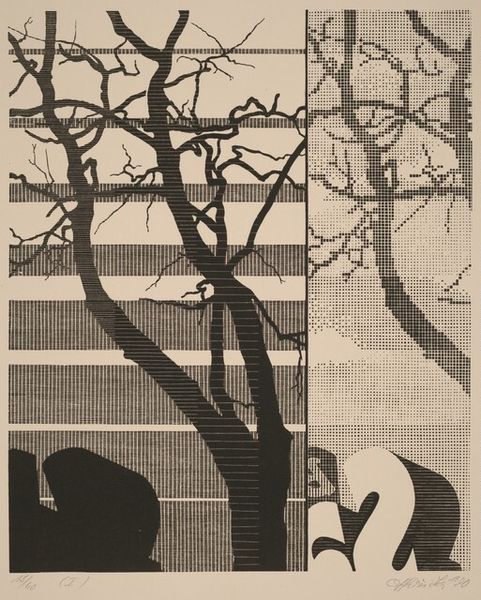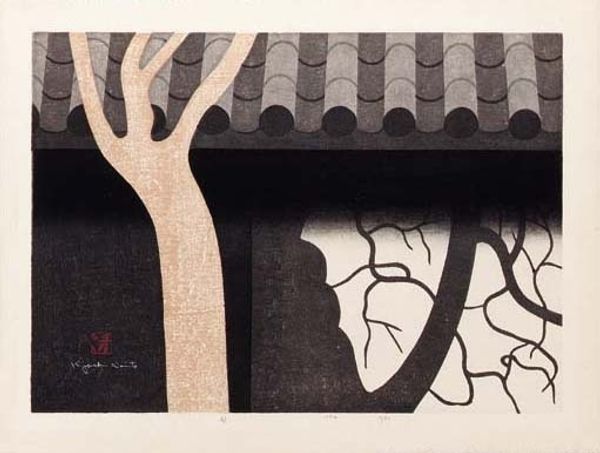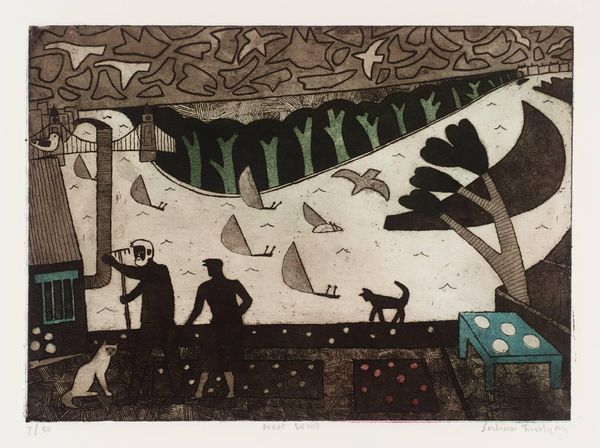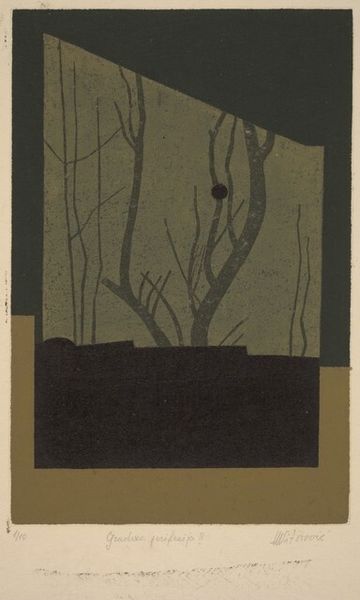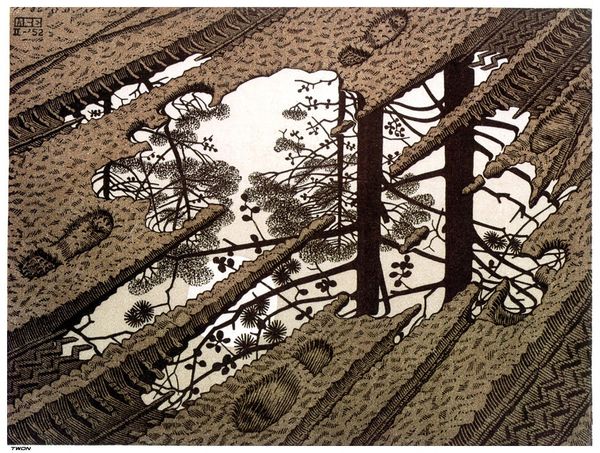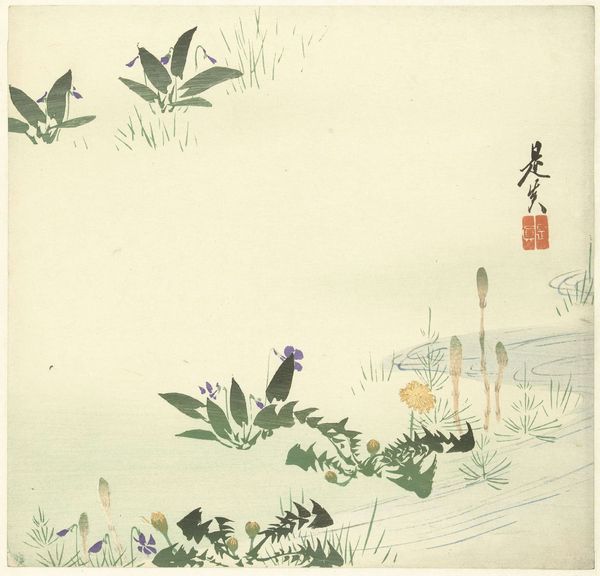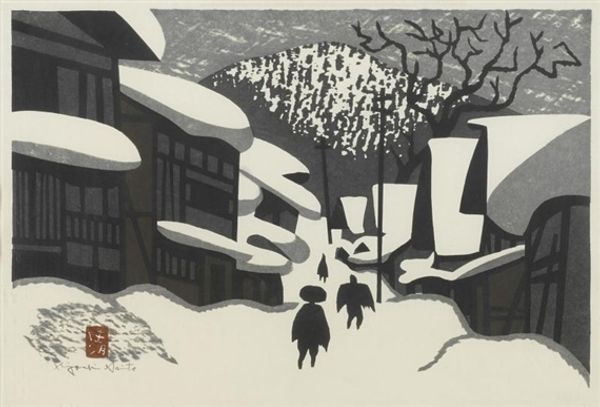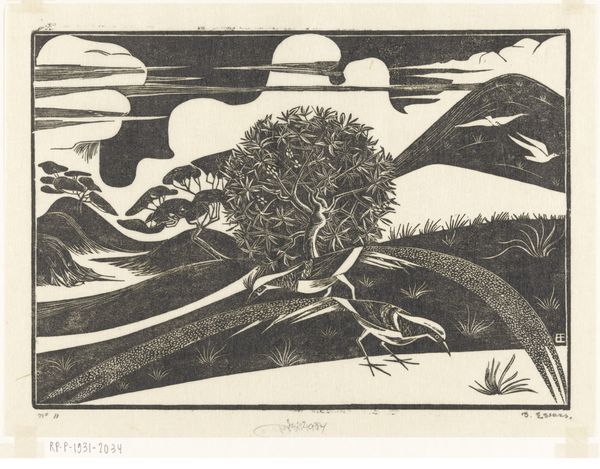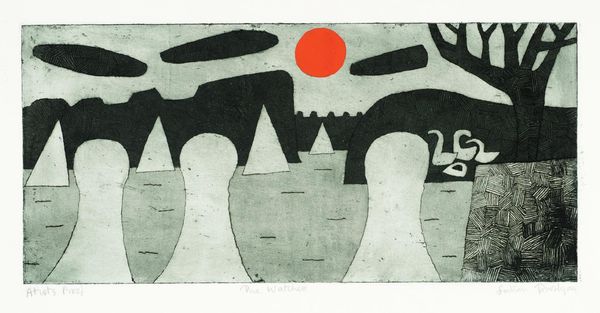
print, woodcut
#
tree
# print
#
landscape
#
winter
#
figuration
#
woodcut
#
line
Copyright: Kiyoshi Saito,Fair Use
Curator: Looking at Kiyoshi Saito's woodcut print, "Winter in Aizu (50)," the immediate impact is starkness, wouldn't you agree? That dominant, blinding white space. Editor: Yes, a striking minimalist sensibility! The contrast between the velvety black tree and that expansive white snowbank is what first captures the eye. Such a well balanced composition using relatively few forms. Curator: It almost evokes a silent Zen koan, that single figure trudging through the snow. In many East Asian cultures, winter is associated with introspection and purification. The bare tree laden with what appears to be persistent fruit becomes a poignant symbol of endurance and hidden potential, much like the human spirit. Editor: Agreed! Notice how Saito skillfully uses line and negative space? The way the branches reach out, almost like grasping at the sky, countered by the horizontality of the snow and building – it creates a compelling visual tension, like a still photograph with high contrast. There’s very little grey, making the overall geometry quite pure. Curator: And even the little dots of color draw our eye! In the symbolism of color, touches of orange are a sign of optimism and abundance, warmth existing during a stark season and reminding us of the life that exists still, during dormancy. In many cultures the persistent nature of these fruits in the Winter months holds significant cultural meaning. Editor: Precisely. It transforms the stark winter scene into something vibrant and almost inviting, a testament to Saito's talent as a printmaker and colorist. The medium itself enhances this. There’s a quality to the print and that ink that seems particularly resonant to winter scenes, it captures a kind of austere feeling. Curator: Considering our discussion, it strikes me that Saito uses visual vocabulary rooted in tradition but expresses it with a decidedly modern sensibility, bridging cultural memory with a contemporary experience of winter’s solitude. Editor: And I think that this balance that we’ve uncovered, from the color contrast to the formal geometries, encapsulates Saito’s genius. We both entered this piece responding to our different viewpoints and still encountered and identified common meanings within.
Comments
No comments
Be the first to comment and join the conversation on the ultimate creative platform.
